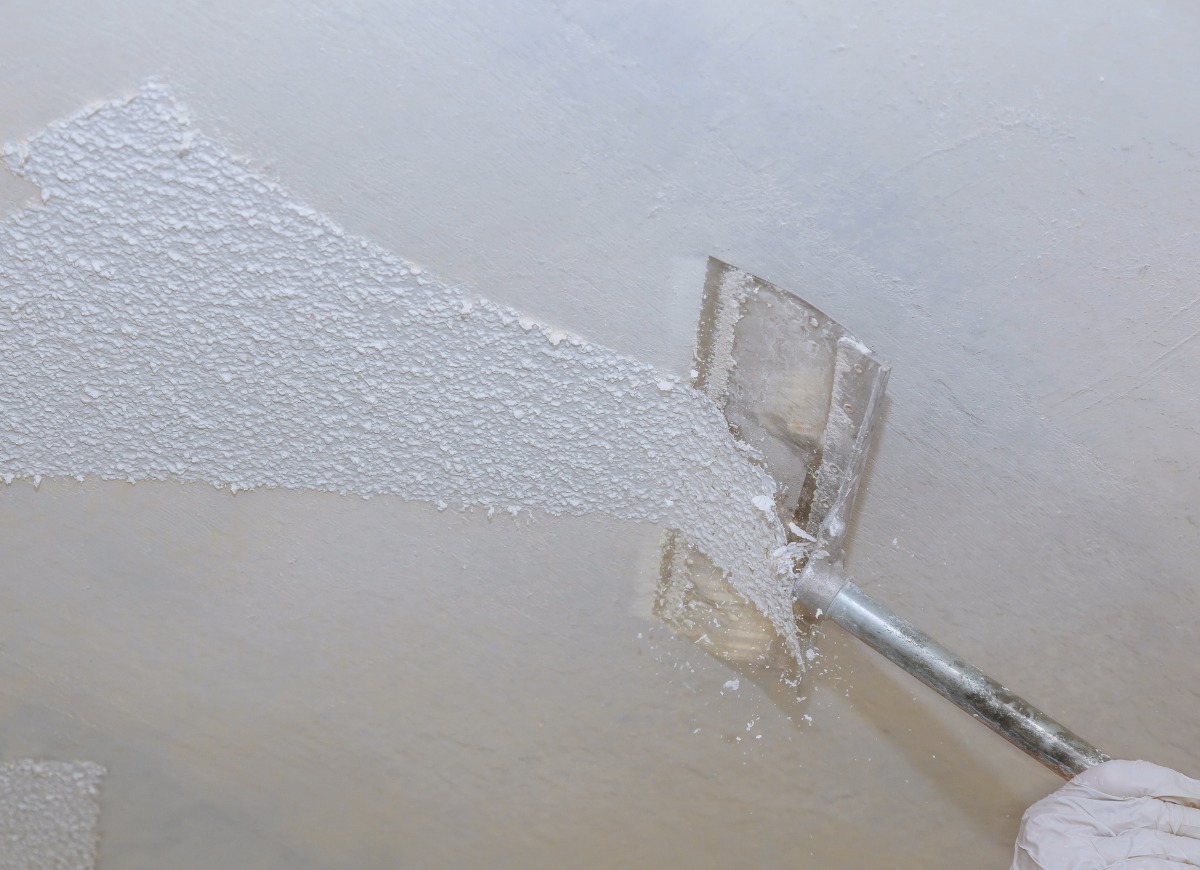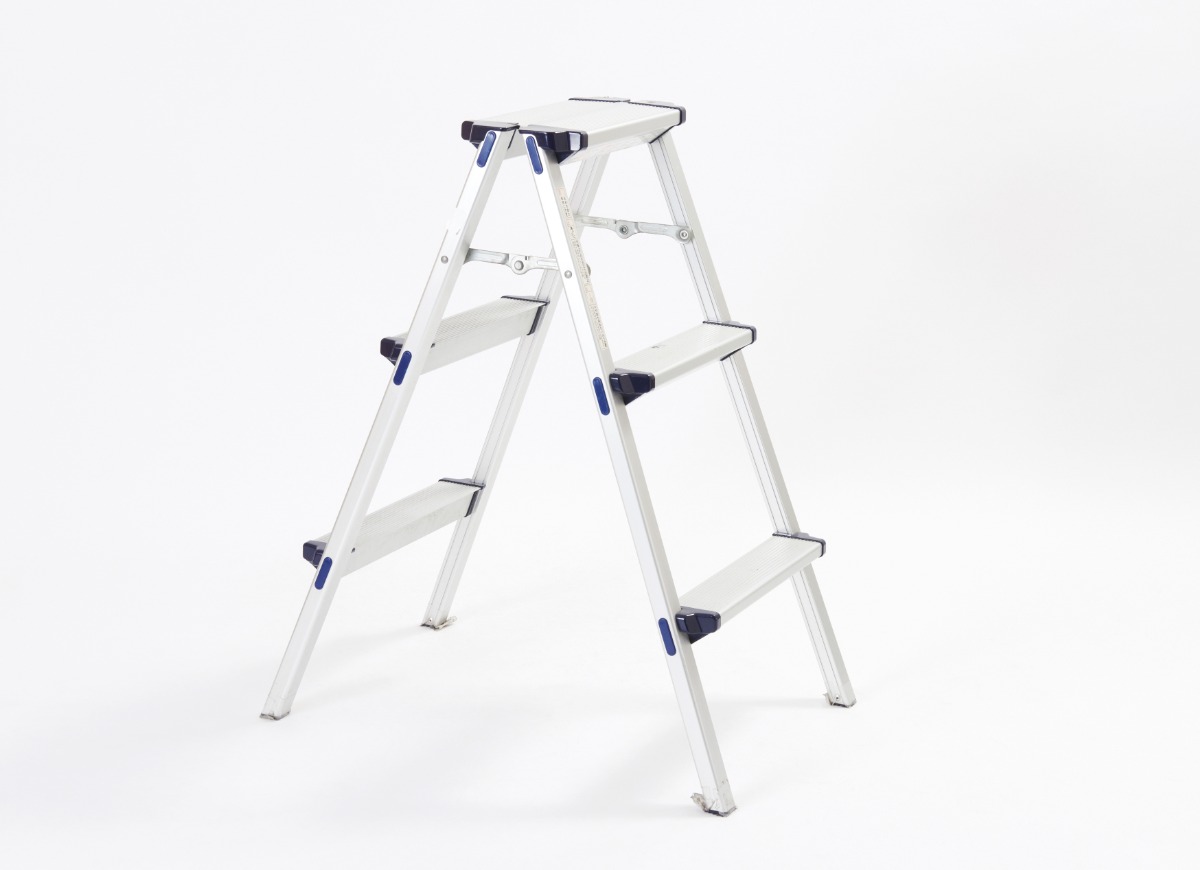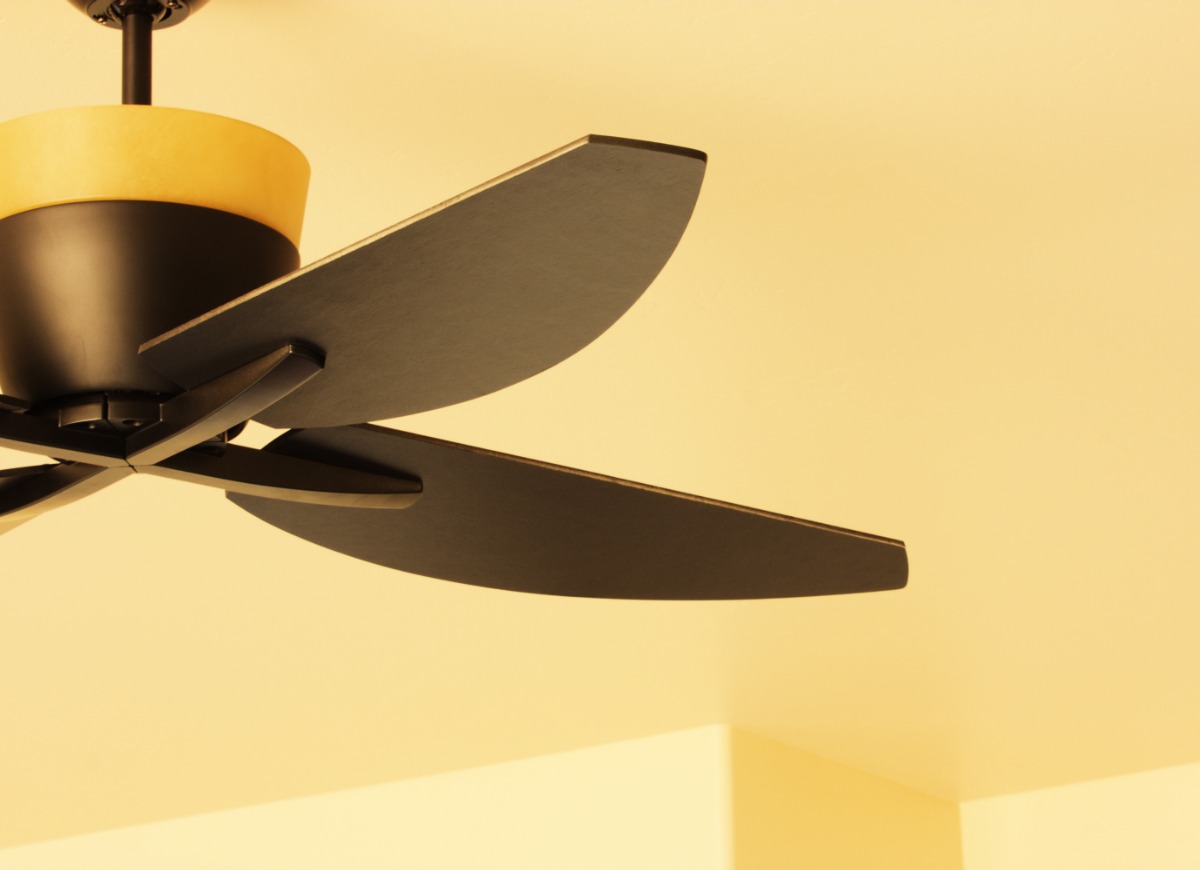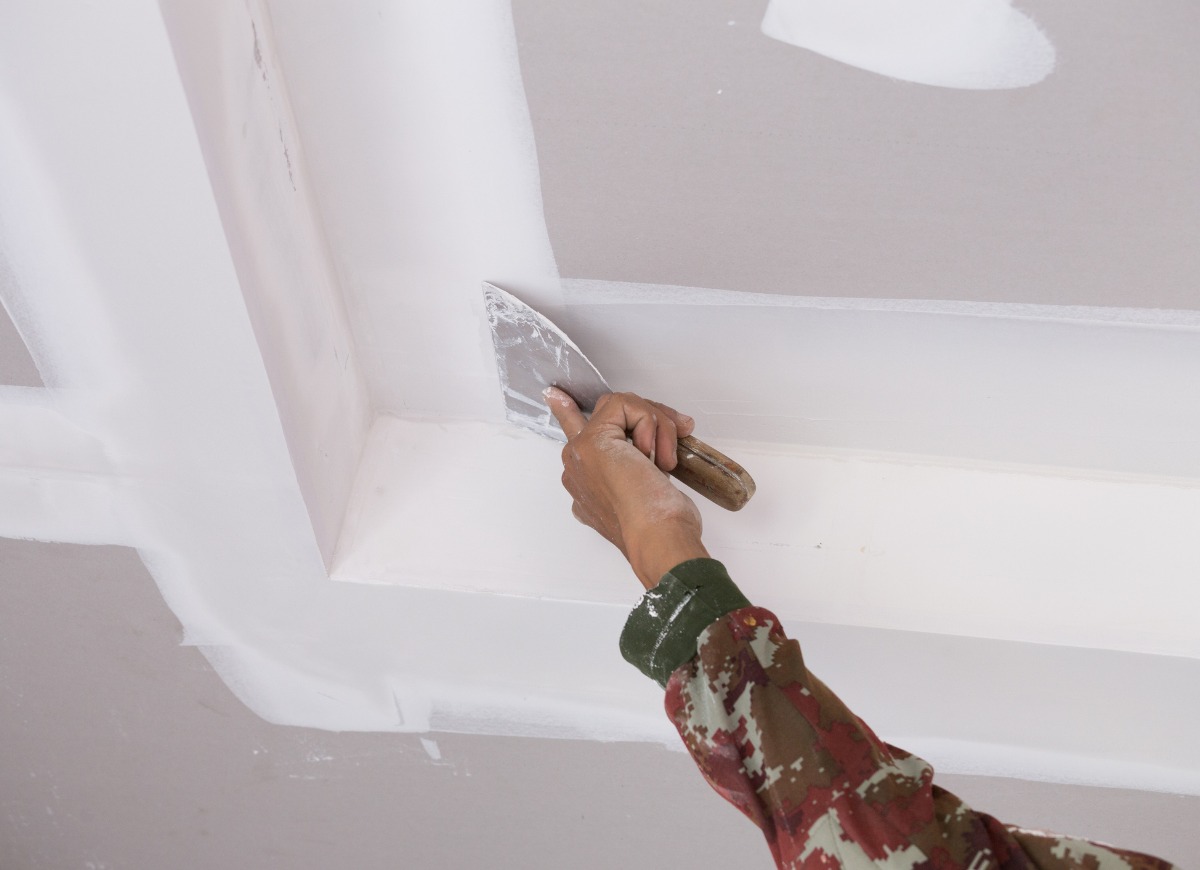We may earn revenue from the products available on this page and participate in affiliate programs. Learn More ›
Cracks appear in drywall and plaster for several reasons, from normal settling of the house, to faulty workmanship, roof truss uplift, or water leaks. While repairing cracks on walls is pretty straightforward, it’s a bit more complicated with ceilings, which typically have some type of texture applied and are overhead, making the repairs a (literal) pain in the neck. By following a few time-honored techniques, a savvy homeowner can often successfully repair cracks in ceilings without too much trouble. The trick is knowing what to do first, what tools to use, and recognizing whether it’s time to call in the professionals.
DO pinpoint the cause of the crack.
Sometimes, the cause of a ceiling crack is apparent, such as visible water stains on the ceiling, which indicates a leak caused the joint compound to soften and crack. A delicate spider web of hairline cracks is often the result of applying joint compound too thickly, which resulted in shrinkage and the development of cracks as it dried. Before tackling this ceiling repair, correct the cause of the cracks, such as fixing leaks to prevent cracks from recurring.
DON’T proceed without a plan.
Depending on the type of ceiling texture and the extent of the crack, ceiling repairs might involve removing some of the texture to make the repair and then patching the ceiling with a product that matches the rest of its surface. Rather than smearing some spackle into the crack with a finger (which sometimes works!), consider whether retexturing or painting will be necessary to give the ceiling a finished look after the crack repairs are complete. For the best results, consider all aspects of the project and the desired outcome.
RELATED: 9 Types of Ceilings Every Homeowner Should Know
DO consider popcorn ceiling removal.
All the rage in the 1960s and 70s, popcorn ceilings that still survive today are often dust and grime collectors, and any type of crack repair is likely to stick out like a sore thumb. Since this type of ceiling can actually reduce a home’s market value, this may be an excellent time to get rid of the texture or cover it up with drywall panels or rigid foam panels. Popcorn ceilings installed before 1978 may contain asbestos, so it’s vital to find out what type of popcorn texture is on your ceiling before making repairs. It’s usually better to have an asbestos-remediation expert remove a popcorn ceiling that contains asbestos.

DON’T cheap out—buy the right tools for ceiling repair.
If the crack is a very thin hairline—and it’s been there for a while—odds are you can simply put a little spackling on a finger and smear it carefully into the crack, taking care to wipe away residue from the surface. More often, however, the crack will be larger, or the ceiling will have multiple cracks. When this is the case, using the right tools and materials will provide the best results. A 6-inch taping knife works well for removing loose ceiling texture and peeling paper. A small tub of premixed drywall mud is necessary for filling the cracks, and using mesh or paper drywall tape to reinforce the compound is helpful. A drywall sanding sponge comes in handy for smoothing the surface after the mixture dries.

DO protect the walls and floor.
Wet drywall compound has a way of dripping everywhere when you’re working overhead, so take steps to protect walls, the floor, and any other items in the room. Lay down a canvas tarp on the floor (plastic drop cloths can become wet and dangerously slippery), and cover any furniture with lightweight plastic drop cloths to avoid ruining them. If the ceiling crack is near a wall, consider covering the wall with a plastic drop cloth to keep splatters off.
DON’T shorten time for drying.
Ceiling crack repairs made with wet drywall compound should be completely dry before another coating is applied. The general rule-of-thumb here is to apply the mixture in the thinnest coat possible, making sure to remove excess with a taping knife. When completely dry, the compound will turn a bright white color. At that point, it can be sanded down and recoated.
DO try a flexible patching compound.
If you’ve repaired a crack in ceiling drywall before, only to have the crack reappear a few weeks or months later, consider sealing the ceiling repair with a flexible product such as Elastopatch Smooth Flexible Patching Compound (available from Amazon). Rather than applying standard paper or mesh drywall tape to the crack, brush on a thin coat of Elastopatch with a small brush—directly over a crack that’s been filled with compound or spackling and then sanded smooth. One or two coats of Elastopatch is all it takes to form a flexible seal over the repaired crack.
DON’T forget to stay safe.
Sanding drywall compound can create billows of dust, and a DIYer should wear a dust mask in addition to eye protection before tackling the task. In addition, when working overhead, use only a sturdy step ladder (no wobbly chairs or stools) in order to reach the ceiling.

RELATED: 11 Breathtaking Ideas for a Wood Ceiling
DO add a finishing touch.
Repaired cracks can look nearly as bad as the cracks themselves if the repairs don’t match the rest of the ceiling. Ceiling patch repair products are available in sprays and semi-liquids for applying with a sponge—be sure to get one that matches the ceiling’s texture. Painting the ceiling is also an option, in which case, look for a high-hiding ceiling paint in a neutral color.
DON’T skip other ceiling updates.
Once the ceiling repair is complete and the ceiling texture has been patched, a dated light fixture or a rusty return-air vent can mar the new look. Consider replacing an old light fixture with a new one, and replace an old vent—or at least clean it and give it a fresh coat of paint—to give the whole room a fresh new look.



